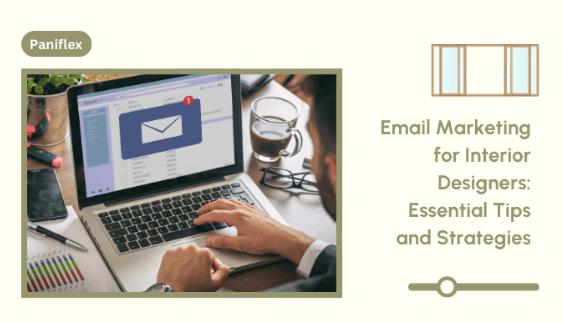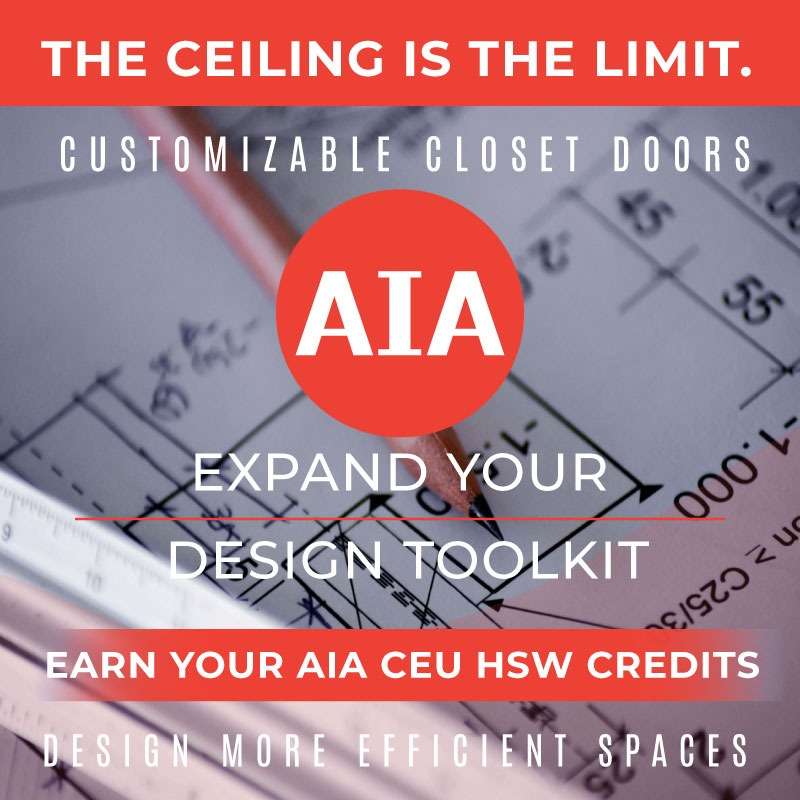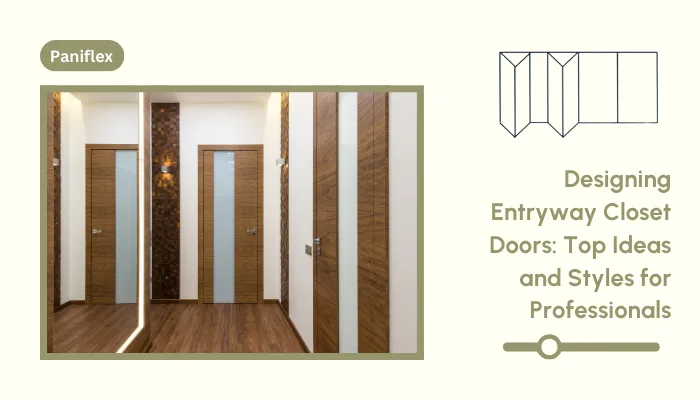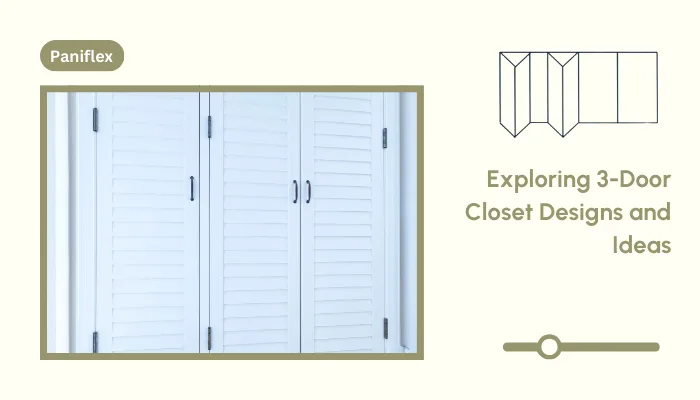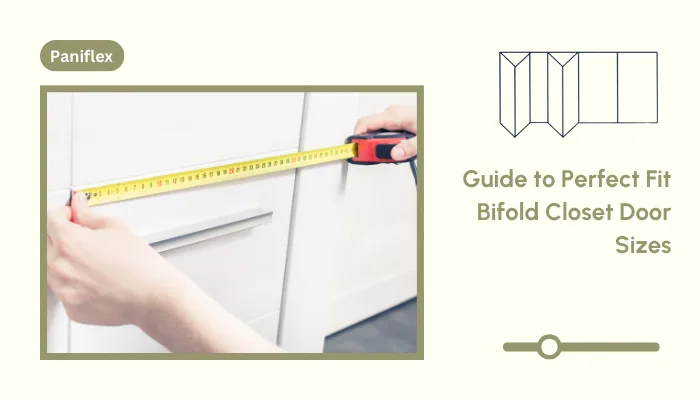Email marketing remains one of the most powerful tools for interior designers to connect with potential clients, nurture existing relationships, and showcase expertise.
In an industry driven by aesthetics and trust, email offers a direct, personalized, and visually compelling way to communicate.
Ready to experience the benefits of custom closet doors? Explore our range of Paniflex products now.
If you’re ready to embark on an email marketing journey but don’t know where to start, this guide is for you.
Why should interior designers invest in email marketing?
Think about how often you check your own email. It’s a constant touchpoint in the modern world, and unlike fleeting social media posts, emails remain accessible and wait patiently for the recipient to engage. For interior designers, email marketing provides:
- Direct access to a highly interested audience: Subscribers are individuals who have already shown interest in your work or services.
- High ROI: Email marketing consistently outperforms many other channels in terms of return on investment.
- Personalized communication: Tailored emails can make your audience feel seen and valued, building trust over time.
The best part? You don’t need a massive budget to get started. All it takes is a well-planned strategy and the right tools.
How do you start collecting emails effectively?
Before you can send emails, you need subscribers. Here’s how to attract and build a quality list:
- Add opt-in forms across your website: Place sign-up boxes on key pages like your homepage, blog, or portfolio. Use pop-ups sparingly but strategically—like when someone lingers on a project page.
- Offer value in exchange for emails: Create a lead magnet that resonates with your target audience. Ideas include:
- A downloadable guide, like “Top 10 Tips for Small Space Makeovers.”
- A discount code for a consultation or service.
- Access to exclusive content, such as before-and-after design case studies.
- Leverage social media: Share links to your email sign-up form on platforms like Instagram and Pinterest, highlighting the value subscribers will get.
- Encourage referrals: Offer current subscribers incentives (e.g., a design consultation or freebie) for referring friends who join your email list.
How can you create tailored content for your subscribers?
Creating tailored content for your subscribers starts with understanding their needs, preferences, and where they are in their journey with you.
For instance, a homeowner looking for small-scale DIY tips will have very different content needs than a business seeking an office makeover.
By segmenting your audience and customizing your emails, you ensure each subscriber receives content that resonates with them.
Additional examples of segmented content strategies:
- Demographics-based segmentation: A young professional moving into their first apartment might appreciate emails with budget-friendly decor ideas and space-saving tips. On the other hand, families may benefit from insights into creating functional, kid-friendly spaces.
- Geographic-based segmentation: For clients in urban areas, share tips for maximizing small spaces or incorporating multi-functional furniture. For rural clients, focus on ideas for expansive layouts or incorporating natural materials into design.
- Style preference segmentation: Some subscribers may lean towards minimalist aesthetics, while others prefer bold, eclectic styles. Use past interactions or surveys to determine these preferences and tailor emails with visuals and content that match their tastes.
- Engagement-based segmentation: Track how subscribers interact with your emails. For example, those who frequently click on links about project highlights might enjoy case studies, while others who prefer design tips may be interested in how-to guides or decor trends.
Deep dive into content tailoring:
For instance, consider crafting an email titled – “10 Easy Ways to Refresh Your Space This Weekend.” For DIY enthusiasts, include actionable steps with budget-friendly materials.
For luxury clients, you could highlight premium upgrades, such as switching to custom cabinetry or upgrading to high-end lighting fixtures.
Adding links to your portfolio or e-commerce store for purchasing decor items makes the email both engaging and actionable.
When you personalize content based on subscriber needs, you’re not just sending emails—you’re fostering meaningful connections that turn leads into clients.
What types of emails should interior designers send?
Now that you’ve built an email list, it’s time to engage your audience. Here are some content ideas to get started:
- Welcome emails: Introduce yourself, share your design philosophy, and let subscribers know what they can expect from your emails.
- Project highlights: Showcase your latest work with high-quality photos and brief descriptions that highlight your process and results.
- Design tips and trends: Share actionable advice or insights into upcoming industry trends to position yourself as an expert.
- Client testimonials and success stories: Include quotes or case studies that build trust and credibility.
- Seasonal promotions: Offer discounts or exclusive services during key times, like holiday seasons or summer renovations.
- Behind-the-scenes glimpses: Share your creative process, mood boards, or sneak peeks of ongoing projects.
How do you design visually appealing emails?
As an interior designer, your emails are an extension of your brand’s identity. They should not only reflect your design sensibilities but also provide an engaging visual experience that draws the reader in. A well-designed email leaves a lasting impression and conveys professionalism, creativity, and trustworthiness.
Technical tips for visually stunning emails:
- Image optimization: Use tools like TinyPNG or Adobe Photoshop to reduce image file sizes without compromising quality. This ensures faster load times, especially on mobile devices, while maintaining the visual appeal of your emails.
- Responsive design: Test your emails across various devices, including smartphones, tablets, and desktops, to ensure they display perfectly. Platforms like Mailchimp and Constant Contact offer built-in tools for previewing how emails will look on different screens.
- Clear hierarchy: Design your emails with a logical flow. Use headers, subheaders, and bullet points to guide the reader’s eye naturally. For example, start with an attention-grabbing image, followed by a concise headline, and end with a clear call-to-action button.
Crafting a cohesive brand style:
Your emails should be instantly recognizable as part of your brand. This means:
- Use a consistent color palette that aligns with your website and social media.
- Include your logo in a prominent but unobtrusive location, like the top or footer of the email.
- Choose fonts that are easy to read but also reflect your design sensibilities. For example, a modern sans-serif font pairs well with minimalist designs.
Visual storytelling with examples:
Let’s say you’re sending an email about a recent project. Start with a stunning hero image that showcases the finished space. Below it, include a brief narrative about the client’s goals, your design process, and how you brought their vision to life.
To make the transformation even more impactful, add a before-and-after slider or a short video walkthrough.
Incorporating interactive elements:
Take your emails to the next level by adding interactive features. These could include:
- Clickable image galleries: Showcase multiple angles of a project within a single email.
- Embedded videos: Include short clips of design processes, client testimonials, or project reveals.
- Animated GIFs: Use subtle animations to highlight specific elements, like a rotating 3D view of a furniture piece.
By combining technical precision with creative flair, your emails can become a true reflection of your expertise and elevate your brand’s digital presence.
What tools and practices can streamline your email marketing?
Starting email marketing can feel overwhelming, but the right tools make it manageable. Consider:
- Automation tools: Platforms like Mailchimp and Constant Contact can help you set up workflows, segment your audience, and track campaign performance.
- A/B testing: Experiment with different subject lines, layouts, or calls to action to see what resonates best with your audience.
- Analytics tracking: Monitor open rates, click-through rates, and conversions to understand what’s working and refine your strategy.
Ready to experience the benefits of custom closet doors? Explore our range of Paniflex products now.
Final thoughts
Email marketing is not just a digital communication tool; it’s a way to connect deeply with your audience.
By sharing your expertise, offering value, and maintaining a visually appealing presence, you can turn subscribers into loyal clients.
Whether you’re just starting out or looking to revamp your approach, these tips will help you navigate the world of email marketing with confidence.
Your audience is waiting—start building those relationships today!
Take Your Designs to the Next Level with Paniflex Custom Closet Doors
As you craft your email marketing strategy to showcase your expertise as an interior designer, consider highlighting unique solutions that set your projects apart. Paniflex custom closet doors are more than just functional—they’re an extension of your design vision. With tailored options in bifold and sliding door designs, Paniflex offers a perfect blend of style and precision.
Whether you’re working on a modern loft in Manhattan or a classic residence in Connecticut, Paniflex delivers doors engineered to fit any space down to the nearest quarter inch. Their cutting-edge manufacturing process and bespoke designs ensure that every closet becomes a seamless part of your layout, improving both aesthetics and utility.
Ready to enhance your projects? Visit Paniflex’s online store to explore their custom options and discover how their precision-engineered solutions can elevate your designs.

